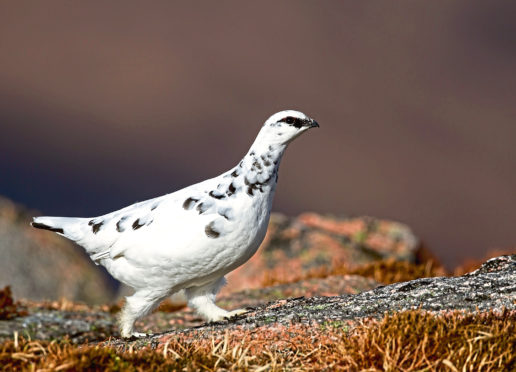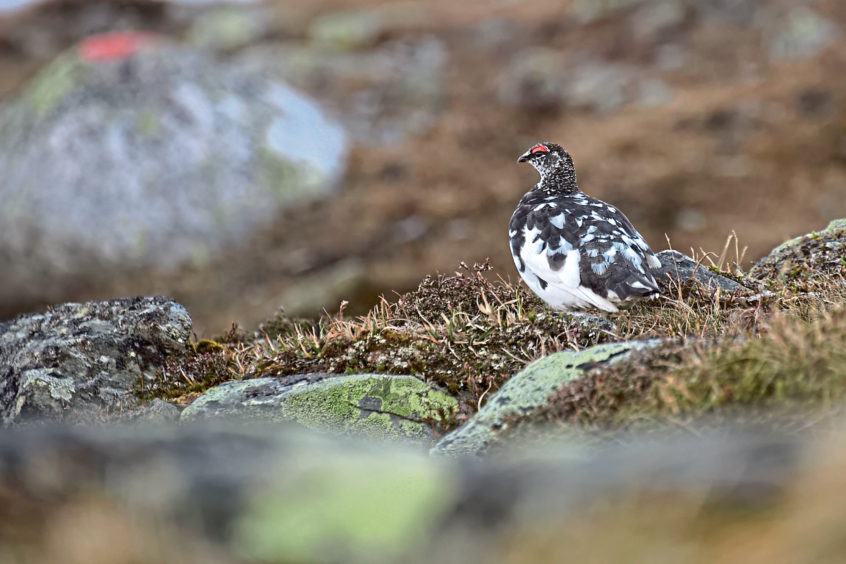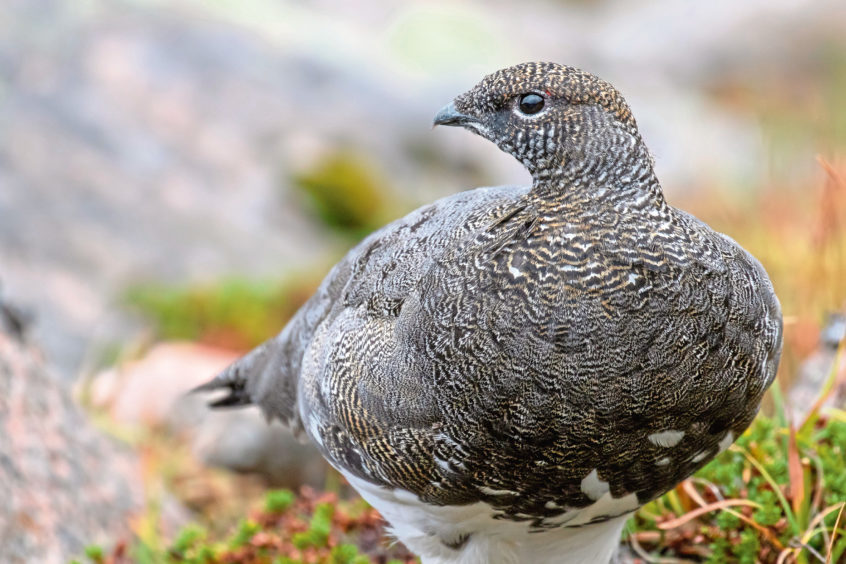The ptarmigan eats the leaves and shoots of arctic-alpine heath plants, as well as insects in the summer. Crowberry is important and ptarmigan feast on their glossy black fruits in late summer.
A frog-like croak echoes through the air and a flurry of white wings catches the sun as this ptarmigan swirls past the corrie, a blast of wind momentarily blowing it off course, before direction and purpose returns once more to its flight.
It was bitterly cold, and despite being early May, snow covered the ground here on the summit of Glas Tulaichean near the Spittal of Glenshee, and my fingers were numb from the perishing wind. Yet, this unforgiving place is home for the ptarmigan, an environment where it thrives throughout the year.
A member of the grouse family, the ptarmigan is a truly special bird, its plumage changing with the seasons, merging and matching in sympathy with the surroundings. In winter the ptarmigan turns almost completely white, but the spring and summer plumage is a cryptic mottled grey, brown and white. The feet of the bird are completely feathered, which not only prevents heat loss, but acts as a handy pair of snow-shoes in winter.
The ptarmigan is a relic of the last Ice Age and is one of our few birds that can be classed as a real specialist of the arctic-alpine zone. It is also a bird that is prone to give the unsuspecting hillwalker something approaching a heart attack, sitting tight and invisible until the last second before exploding airborne at the walker’s feet in a clatter of wings.
It also makes itself known to the dedicated Munro bagger in other ways. In the thick mist that shrouds the high tops so frequently, many hillwalkers will be familiar with the rather eerie experience of the enveloping blanket of grey silence being broken by the hoarse croaking of ptarmigan. Is it one bird, or two or three? It is always hard to tell.
It had been an enjoyable ascent of Glas Tulaichean, and on my way up through Gleann Taitneach, I watched sandpipers bobbing on the river, and glimpsed several mountain hares lolloping along the slopes. Like the ptarmigan, mountain hares turn white in winter, but their coats at this time of year have a wonderful smoky-blue coloration that blends in perfectly with this landscape of heather and rock.
At an altitude of about 760m, I eventually reach Loch nan Eun, which lies at the head of Gleann Taitneach. I have special memories of this loch, camping here as a teenager, and I recall then that it was brimming with brown trout, the circular ripples of their rises peppering the water on a calm summer’s evening.
Ever since, these isolated mountain trout have always intrigued me. How did they get there? Were they introduced, or like the ptarmigan, are they also remnants from the last Ice Age? And if so, then presumably they are now genetically unique compared to other trout populations?
I enjoy these natural conundrums, and as I pondered about trout, I struck up on the last leg to the blustery top of Glas Tulaichean.


